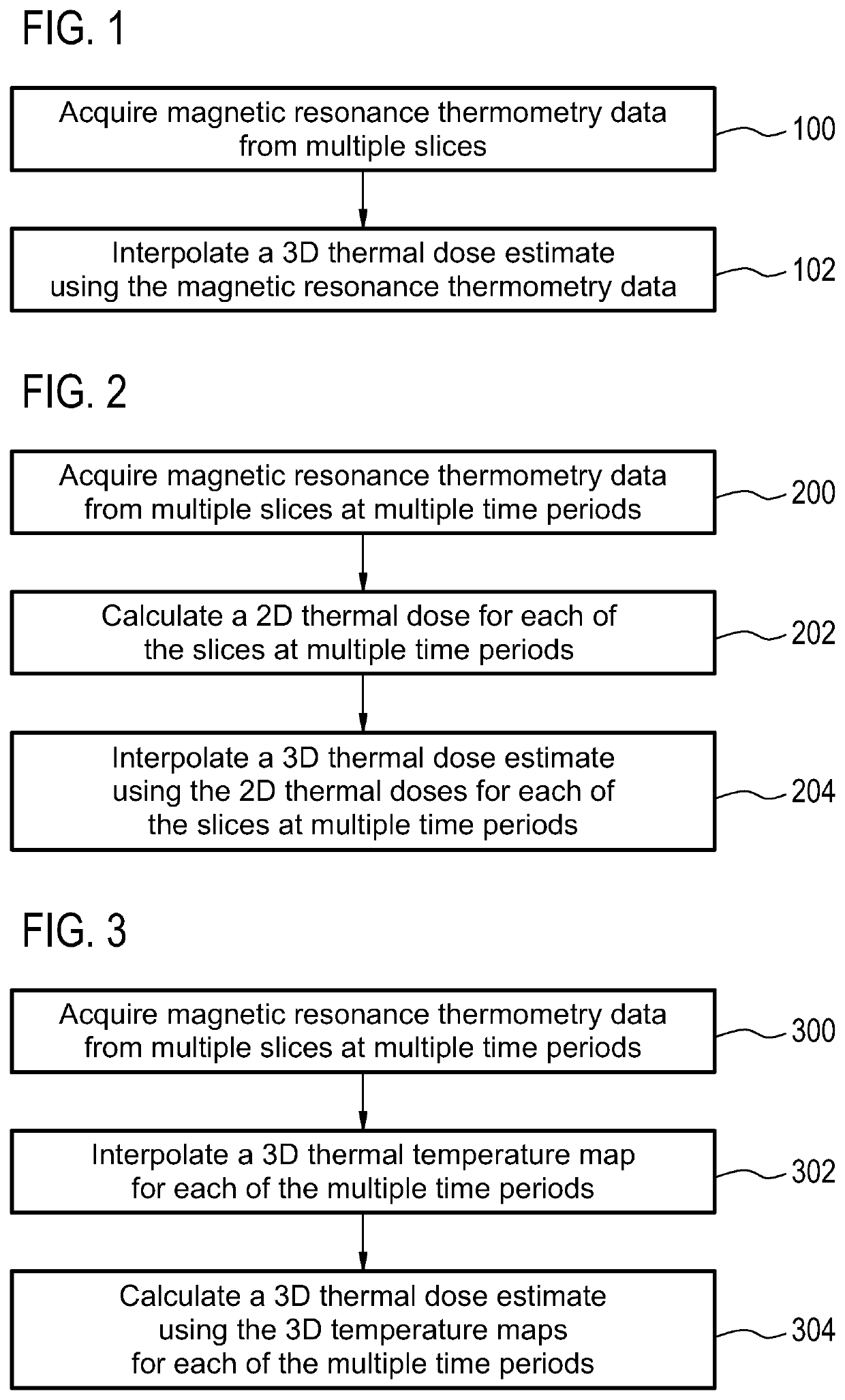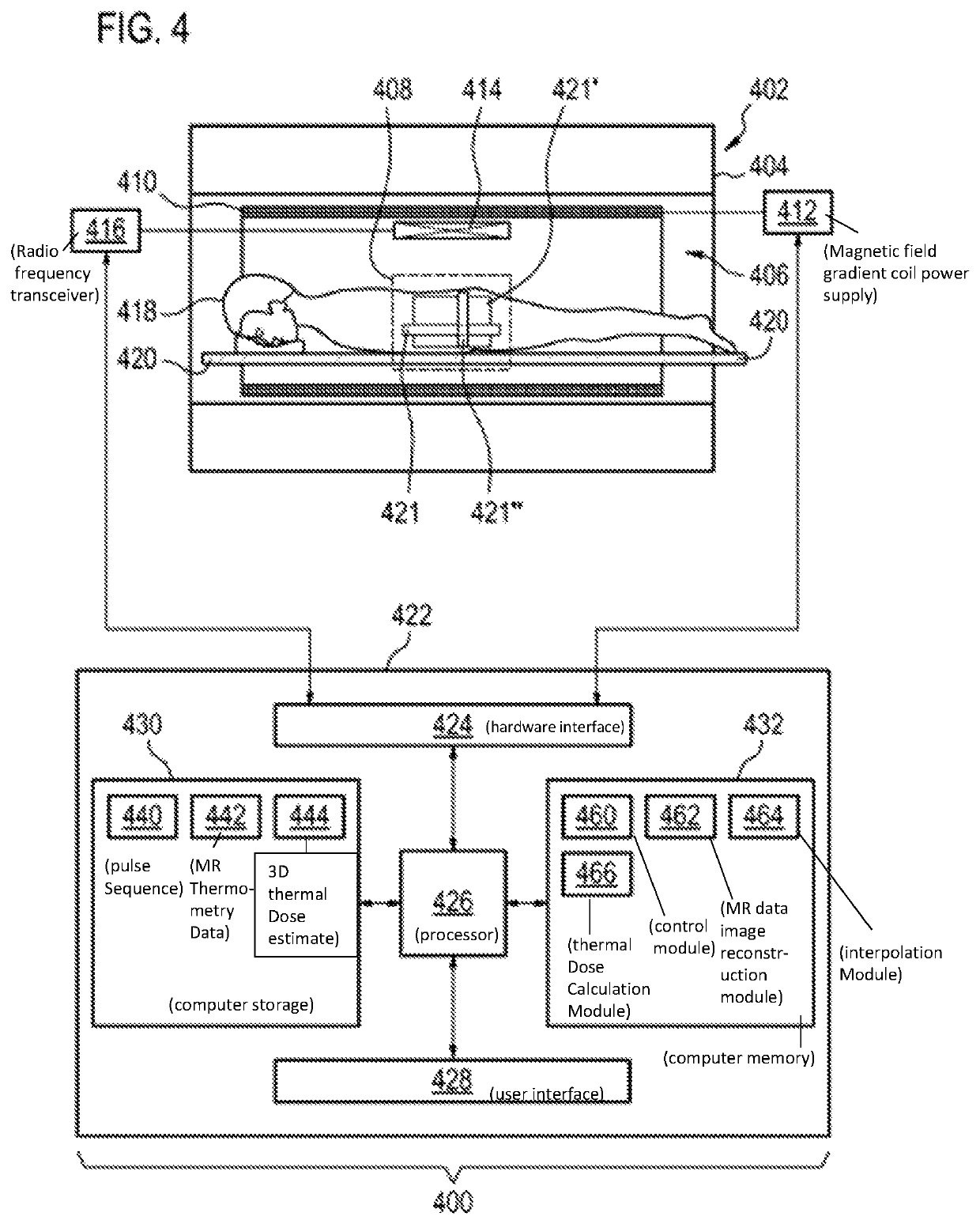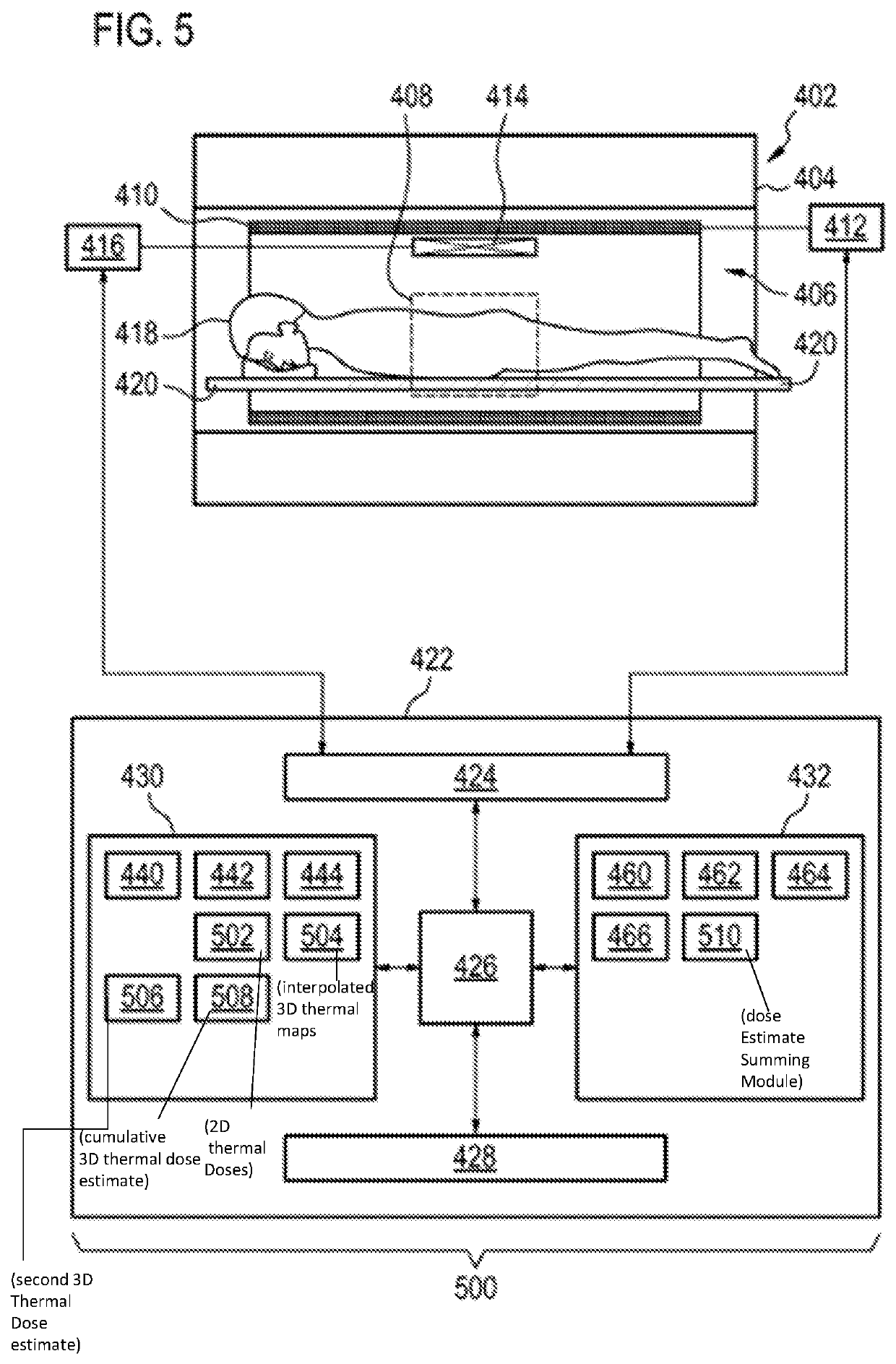Interpolated three-dimensional thermal dose estimates using magnetic resonance imaging
a three-dimensional thermal dose and magnetic resonance imaging technology, applied in the field of magnetic resonance imaging, can solve the problems of limited volume or spatial resolution of thermal data or images acquired, particularly by magnetic resonance imaging, and achieve the effect of useful clinical endpoints
- Summary
- Abstract
- Description
- Claims
- Application Information
AI Technical Summary
Benefits of technology
Problems solved by technology
Method used
Image
Examples
Embodiment Construction
[0069]Like numbered elements in these figures are either equivalent elements or perform the same function. Elements which have been discussed previously will not necessarily be discussed in later figures if the function is equivalent.
[0070]FIG. 1 shows a flow diagram which illustrates a method according to an embodiment of the invention. In step 100 magnetic resonance thermometry data is acquired from multiple slices. Next in step 102 a three-dimensional thermal dose estimate is interpolated using the magnetic resonance thermometry data.
[0071]FIG. 2 shows a flow diagram which illustrates a method according to a further embodiment of the invention. In step 200 magnetic resonance thermometry data is acquired from multiple slices. Next in step 202 a thermal dose estimate is calculated for each of the slices at the multiple time periods. Next in step 204 a three-dimensional thermal dose estimate is interpolated using the two-dimensional thermal doses for each of the slices at multiple t...
PUM
 Login to View More
Login to View More Abstract
Description
Claims
Application Information
 Login to View More
Login to View More - R&D
- Intellectual Property
- Life Sciences
- Materials
- Tech Scout
- Unparalleled Data Quality
- Higher Quality Content
- 60% Fewer Hallucinations
Browse by: Latest US Patents, China's latest patents, Technical Efficacy Thesaurus, Application Domain, Technology Topic, Popular Technical Reports.
© 2025 PatSnap. All rights reserved.Legal|Privacy policy|Modern Slavery Act Transparency Statement|Sitemap|About US| Contact US: help@patsnap.com



